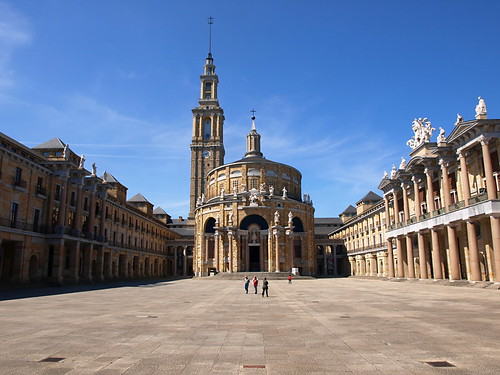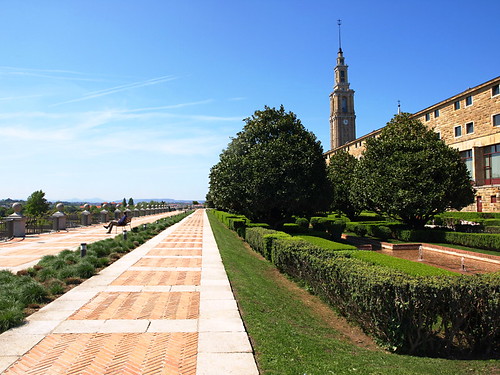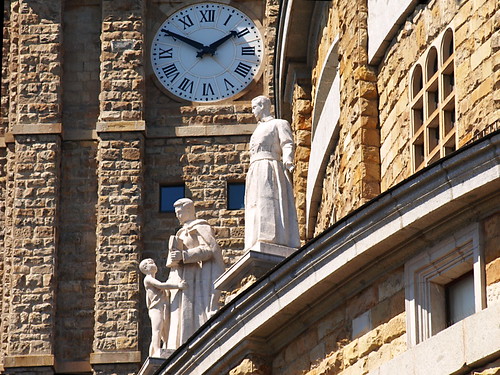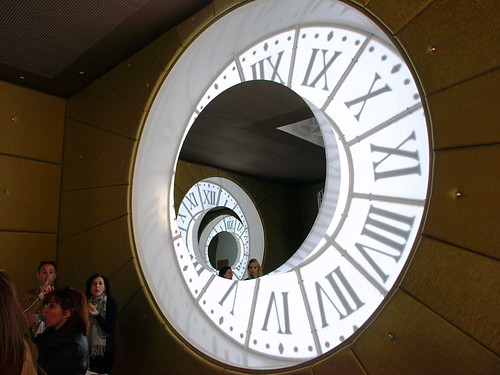Look at the photograph and try to guess what purpose this opulent architectural wonder in Gijón was constructed to serve. A palace perhaps? A theological retreat? A boarding school for the children of the rich and the privileged?
It is none of these; this magnificent building, the design of architect Luis Moya Blanco, was conceived in 1948 as an orphanage; a surrogate home to the parent-less children of the region’s miners. It was created to serve as a self-sufficient Utopian city complete with gardens and a farm.
During construction its raison d’être changed and it began life as possibly the grandest technical college on the planet. Named the Universidad Laboral de Gijón, it was a grass roots seat of learning where generations of working class children were trained in trades such as fitters, engineers and welders.
This classical looking building was by all accounts a bricks and mortar working class hero.
Between 1980 and 2001, the grand old building fell into neglect and disrepair until its ownership was taken over by the Asturian Government. Following years of hard work and a serious injection of TLC, the Universidad Laboral was transformed into the Laboral Cuidad de Cultura, a quite unique and overwhelming centre for art and culture.
Despite its age, there is something not quite of this world about the Laboral Cuidad de Cultura. It is pleasing to the eye for sure, but there is a strangeness to it; the sheer scale of its palatial frame dominates the green Asturian countryside. The term Utopian vision seems perfect – it could have been a star in a work by Orwell. It would also have been perfect as a location for an episode of The Prisoner.
Once inside its scale is, if anything, even more impressive; it is epic. A long, wide central courtyard is bordered by neoclassical buildings that are home to theatres, art galleries, exhibition halls and cafés as well as creative organisations such as the Asturian Broadcasting Corporation and the College of Dramatic Art and Professional Dance. The square is dominated by the old church – decorated by pristinely white sculptures of Jesuit figures – and beaconing tower which also doubles as a quite bizarre location for private functions. Quaffing cava and munching on creative tapas behind a clock face has a distinctly bohemian and quite Hitchcock-esque feel to it.
At night and at weekends the Cuidad de Cultura probably comes alive as Asturias‘ cultured population are drawn by concerts and theatre performances. But during weekdays this huge monument to art, culture and philanthropy can be unnervingly devoid of visitors. It could swallow up hundreds if not thousands of people and still feel tranquil, but during my visit there were only a handful of other visitors.
The lack of other human life lent the Laboral Cuidad de Cultura the exclusive air of a lost and forgotten treasure and as I wandered its corridors and immaculate gardens I felt a bit disconnected, almost like a ghostly intruder from another time, or plane.
Despite its obvious beauty, there seems to be an inherent melancholy about the Laboral Cuidad de Cultura. But maybe that’s only because I’m aware of its original purpose and can’t shake the thought that if you build a place of this magnitude just to house orphans…how many people actually lost their lives in the mines of this green and pleasant land.
Buzz Trips Fact File: The Laboral Cuidad de Cultura is a beautiful construction and a worthy project and I’d urge any visitors passing this way to make a detour to experience its hypnotic qualities.
It is open to the public Monday to Friday from 8am to 8pm and from 10am to 2pm & 3.30pm to 8pm on Saturdays and Sundays. Opening times are extended when there is a concert, festival or play.It lies off the A8 autopista and is easily reached by car from both Gijón and Oviedo. Given that it’s the biggest construction for miles around, it’s impossible to miss.
Buzz Trips visited Laboral City of Culture as a guest of the Asturias Tourism Board. However, all views, opinions and flights of fancy are entirely my own.









Be the first to comment